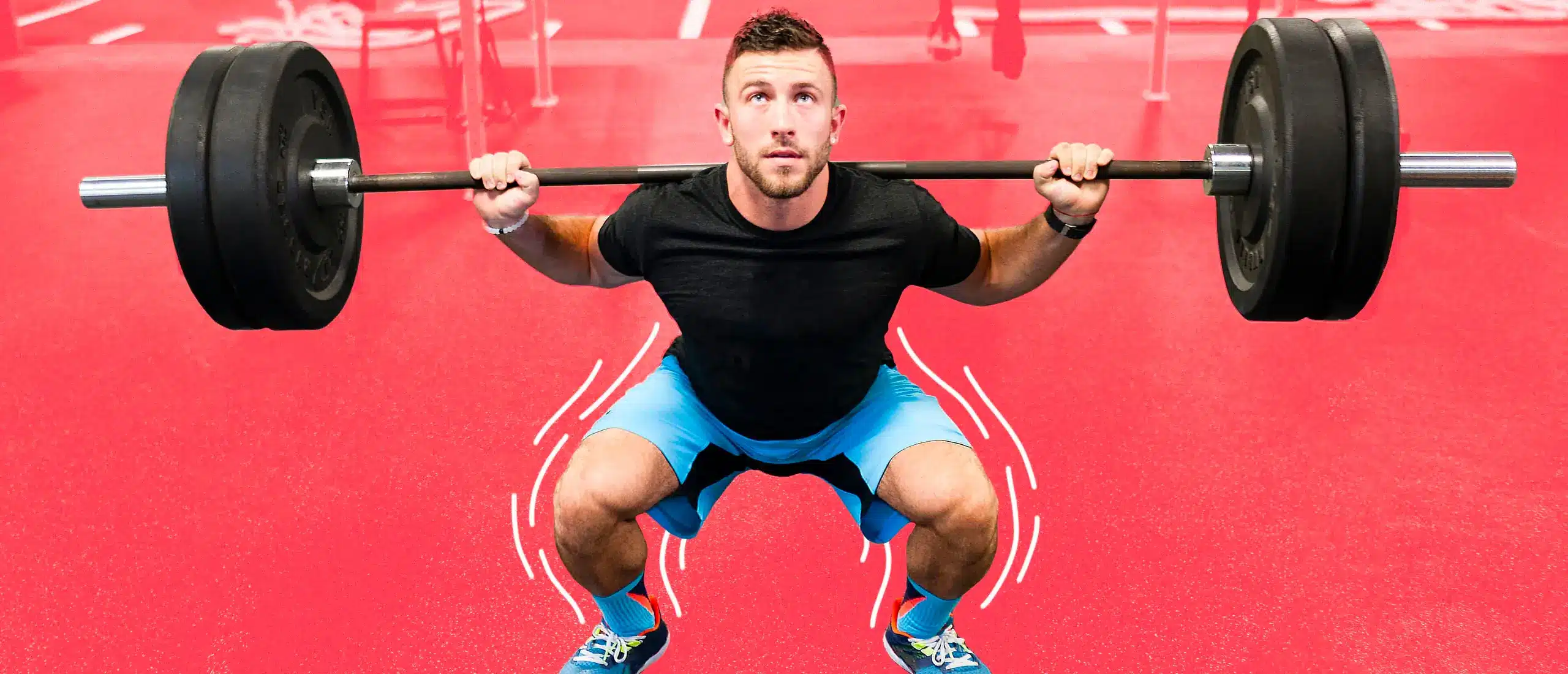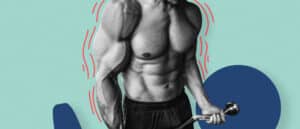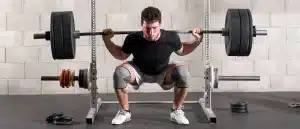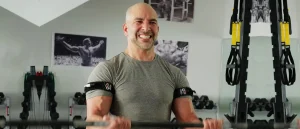Why Is Reddit Obsessed With the Push Pull Legs (PPL) Split?
Fast Facts
- A PPL split is a simple training schedule that trains different muscle groups on different days of the week.
- Breaking up workouts into push, pull, and legs maximizes work and rest to help you make gains.
- PPL splits prioritize movement over individual muscle groups to effectively build functional strength.
Hit the gym consistently, and you’ll see some pretty questionable things—from gym bros chasing a pump to attention seekers ego lifting. For every few phone scrollers, you’ll catch a unicorn: headphones on, head down, putting in the work.
If they’re always pumping iron, with the muscle to show for it, you can guarantee they’re following a structured workout routine. There are endless ways to break it down. One of the best? The “Push Pull Legs” (PPL) routine.
Praised for its simplicity and attention to movement (as opposed to focusing on individual muscle groups like a bro split), the push pull legs split is one of the most popular ways to program your workouts. Even better, in a sea of Reddit threads arguing over which split is the best, few have anything negative to say about a PPL routine.
What’s so great about a PPL split and exactly how do you use it for maximum muscle gains? Everything you need to know is below.
What Is a Push Pull Legs Split?
A PPL split is a workout program designed to build muscle in almost every single muscle group by splitting different movements (and thus, major muscle groups) into distinct days of the week. On certain days you train your upper body pushing muscles (push), upper body pulling muscles (pull), or your lower body (legs). Like so:
- Day #1, Push: Chest, shoulders, triceps
- Day #2, Pull: Back, biceps
- Day #3, Legs: Legs, glutes, abs
- Day #4, Push: Chest, shoulders, triceps
- Day #5, Pull: Back, biceps
- Day #6, Legs: Legs, glutes, abs
- Day #7, Rest
The main idea is that you follow an alternating format to give each muscle group adequate recovery between sessions while continuing to work other muscle groups. The schedule itself is relatively flexible and can be broken down into a three-day, four-day, five-day, or six-day split (like above).
Why Push Pull Legs Splits Are So Effective
There are tons of benefits of PPL splits, but here are the main three.
Highly functional
Typically, a PPL split revolves around compound movements—exercises that recruit multiple muscle groups—to provide the maximum return for your effort and time. By doing so, it categorizes movement by grouping muscle groups that often work together.
For example, on a push day, you’ll hit both chest and shoulders which are both involved in similar movements—like chest and shoulder press. By shifting the focus to the pushing movement pattern (as opposed to targeting the chest or shoulders individually) you’ll learn how to use your muscles as you use them in real life: together.
Flexible schedule
One of the major pros of a PPL split is the fluidity of the schedule. If your schedule allows anywhere from three to six days for strength-focused workouts, you can make a PPL split work for you.
It’s also great for those with ever-changing schedules. If you’re having a busy week, combine your push and pull days to cut back to a four-day split, then expand to a six-day split on weeks you have the time and energy. As long as you give your body at least 48 hours of rest in between working the same muscle groups, you’re golden.
Maximize work and rest
You could argue that training frequency (how often you’re working out) matters less for muscle mass and strength gains than your overall training volume (the sets and reps you’re hitting on a weekly basis)(1, 2). If your routine prioritizes both mechanical tension (lifting heavy) and metabolic stress (intensity), you can expect strength gains (3, 4). Hit muscle groups too infrequently, however, and you may struggle to maximize either.
One study found that training muscle groups two to three times a week, with volume spread over the course of the week is ideal for improving strength while minimizing fatigue (5). A PPL breakdown ensures you’re hitting each muscle with enough volume, without doubling up on a muscle group before it’s fully recovered. It also uses your rest time for one muscle group to work another, maximizing both work and rest.
Is a Push Pull Legs Split Right for You?
If you’re time-poor, it might not be. It all comes down to your schedule and how much time you have to dedicate to a lifting regimen. A PPL split requires three to six sessions per week. If three sessions is a stretch you might be better off with a full body split where you combine push, pull, and legs all in one session.
Push Pull Legs Split Workout Schedule
Ready to commit? Here’s your cheat sheet. Choose the number of training days per week (three to six) and schedule that’s both realistic and aligns with your current fitness level and training experience. You can always switch it up later. There are many ways to break it down, so adjust the examples below as needed to fit your schedule and goals.
3-Day PPL Split Schedule
This PPL split is perfect for beginners looking to build confidence in the gym. The downside to this schedule is you’ll need to hit a relatively high volume per session to see gains. If you’re struggling to pack all the work into three sessions, level up to one of the following schedules for better results.
- Day #1: Push
- Day #2: Rest
- Day #3: Pull
- Day #4: Rest
- Day #5: Legs
- Day #6: Rest
- Day #7: Rest
4-Day PPL Split Schedule
If you want to increase your volume but don’t want to spend six days in the gym, this is the PPL split for you.
- Day #1: Push/Pull
- Day #2: Legs
- Day #3: Rest
- Day #4: Push/Pull
- Day #5: Legs
- Day #6: Rest
- Day #7: Rest
5-Day PPL Split Schedule
Many gym goers will use a five day PPL split to train push and pull muscles twice, and legs only once. This might be good for those with specific physique goals like bodybuilders, but if you’re lifting for general strength you’ll be better off with a balanced routine that hits all muscle groups twice. Here’s how.
- Day #1: Push
- Day #2: Pull
- Day #3: Legs
- Day #4: Rest
- Day #5: Push/Pull
- Day #6: Legs
- Day #7: Rest
6-Day PPL Split Schedule
If you have the time and dedication to lift six days a week, you’ll be rewarded by being able to put in a higher volume. Plus, you’ll have more energy to give each muscle group and movement pattern the attention it deserves.
- Day #1: Push
- Day #2: Pull
- Day #3: Legs
- Day #4: Push
- Day #5: Pull
- Day #6: Legs
- Day #7: Rest
Best Push Pull Legs Workout Routine
There are many different ways to program a PPL split. Below is one of our favorites. What’s unique about this routine is it starts with the heaviest compound work to build overall strength, then moves into moderately heavy sets with a higher volume to increase muscle growth while reducing the impact on your joints. It finishes off with pump-inducing, isolation exercises at relatively lower loads.
This style of training allows you to get the highest priority, and high-effort work out of the way, then continue to supply your muscles with stimulus as they begin to tire out. It also ensures you aren’t detrained in muscular endurance, hypertrophy, or strength which will make you a better overall lifter, reduce your risk of injury, and yield better results long-term.
The sets and reps vary on the weight below for a reason. If you’re a novice, start with the lower end of sets and reps. Choose a load that’s challenging (you should feel like you’re maxing out on the final one to two reps of each set). From there, you can increase reps and sets to build your overall volume at that weight class. Once you nail the high end of reps and sets at a particular weight class it’s time for a heavier load.
|
Day 1: Push Workout |
||
|
Exercise |
Sets |
Reps |
|
Bench Press |
3-4 |
5-8 |
|
Standing Dumbbell Shoulder Press |
3-4 |
8-10 |
|
Incline Bench Press |
3-4 |
8-10 |
|
Lean Away Dumbbell Lateral Raise |
2-3 |
10-15 |
|
2-3 |
10-15 |
|
|
Dumbbell Overhead Extension |
2-3 |
10-15 |
|
Day 2: Pull Workout |
||
|
Exercise |
Sets |
Reps |
|
Barbell Bent Over Row |
3-4 |
5-8 |
|
Pull-ups (modify with resistance bands or negative reps) |
3-4 |
6-10 |
|
Reverse Grip Lat Pulldowns |
3-4 |
8-10 |
|
Chest Supported Rear Delt Row |
3-4 |
8-10 |
|
Bicep Curls |
2-3 |
10-15 |
|
Face Pulls |
2-3 |
10-15 |
|
Day 3: Legs Workout |
||
|
Exercise |
Sets |
Reps |
|
Deadlift |
3-4 |
5-8 |
|
Back Squat |
3-4 |
5-8 |
|
Hip Thrust |
3-4 |
8-10 |
|
Bulgarian Split Squat |
3-4 |
8-10 |
|
Glute Ham Raise |
2-4 |
10-15 |
|
Standing Calf Raise |
2-4 |
10-15 |
The Bottom Line
The push pull legs routine is a simple and practical way to break down your weekly workout routine. When done correctly, it can help build muscle strength and mass, and prioritize functional movement over individual muscle groups. For best results, try a four, five, or six-day split to maximize volume and gains.















